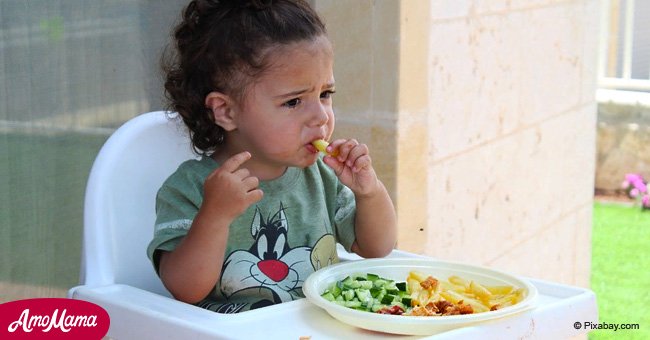
Here's how to get your children to eat more vegetables, study shows
A study revealed that giving children plates with photos of vegetables may nudge them to serve themselves more of this food and eat more of them as well.
According to a research letter published in the journal JAMA Pediatrics, segmented plates with images of suggested foods in each compartment motivated preschoolers to eat more vegetables.
These plates could be a tool to nudge kids toward healthy habits early in life, the researchers said, as reported by CNN.
The report author Emily Melnick stated that "It's a really important time period in children's lives to experience fruits and vegetables."
Follow us on our Twitter account @amomama_usa to learn more.
Melnick is the doctoral candidate in health and behavioral sciences at the University of Colorado Denver.
Based on the report, children served themselves approximately 14 grams more vegetables daily on average and ate about 7.5 grams more on days when they used these plates than when they used their usual plates.
Melnick said that in the end, 7.5 grams does not make an extra serving. However, it does "signify a willingness to take some more fruits and vegetables."
Her study observed 235 kids at a preschool in Arvada, Colorado. Just one day after the intervention, the progress in children eating vegetables took place.
The study also shows that children didn't eat more fruits with the segmented plate. According to the report, it could be a "ceiling effect."
"They were already consuming the majority of the fruits made available at lunchtime when we went in initially, but they were only taking about 65% of the vegetables in the bowls. So there was more room for improvement," said Melnick, who has also worked on more long-term nutrition education programs in schools.
"It's really interesting to see that something as simple as introducing a plate can potentially have an influence on children's consumption patterns."
According to her, it wasn't just the children who used the plates.
"The teachers just loved them in terms of having conversations with kids about foods and food groups ... and what your plate should look like," she said. "It was a fun educational experience."
